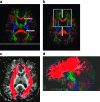Deconstructing psychosis with human brain imaging
- PMID: 17548845
- PMCID: PMC2632317
- DOI: 10.1093/schbul/sbm045
Deconstructing psychosis with human brain imaging
Abstract
This review synthesizes our current knowledge on the neurobiology of psychosis from an array of in vivo brain-imaging studies. The evidence base consists of hundreds of studies of patients with schizophrenia and fewer on bipolar disorder but rarely providing direct comparisons between the disorders or integration across methods. Replicated findings in schizophrenia include reduced whole-brain and hippocampal volume as potential vulnerability markers, with further progression at onset; reduced N-acetyl aspartate concentrations in hippocampus and prefrontal cortex; striatal dopamine D(2) receptors upregulation; and alteration in the relation between frontal and temporal activation. These findings are not attributable to medication effects but are of unclear specificity and may apply across the psychosis spectrum. There are consistently replicated associations of psychotic symptoms and cognitive impairment in both structural and functional imaging in schizophrenia but not, as yet, in bipolar disorder. Therefore, it would be premature to dispense with current diagnostic categories because direct comparisons among them are rare, insufficient studies have examined longitudinal changes, and long-term imaging outcome studies in first-episode psychosis have not yet been done. To address these issues and make neuroimaging "clinically relevant," investigators will need to standardize their approaches to data acquisition and analysis, and construct the necessary range of "human brain maps," to implement studies that are sufficiently powered to provide reliable data pertinent to deconstructing psychosis.
Figures




References
-
- Lisanby SH. Psychosis secondary to brain tumor. Semin Clin Neuropsychiatry. 1998;3:1–12. - PubMed
-
- Erhart SM. Clinical utility of magnetic resonance imaging radiographs for suspected organic syndromes in adult psychiatry. J Clin Psychiatry. 2005;66:968–973. - PubMed
-
- Lawrie SM. Qualitative cerebral morphology in schizophrenia: a magnetic resonance imaging study and systematic literature review. Schizophr Res. 1997;25:155–166. - PubMed
Publication types
MeSH terms
Grants and funding
LinkOut - more resources
Full Text Sources
Medical

